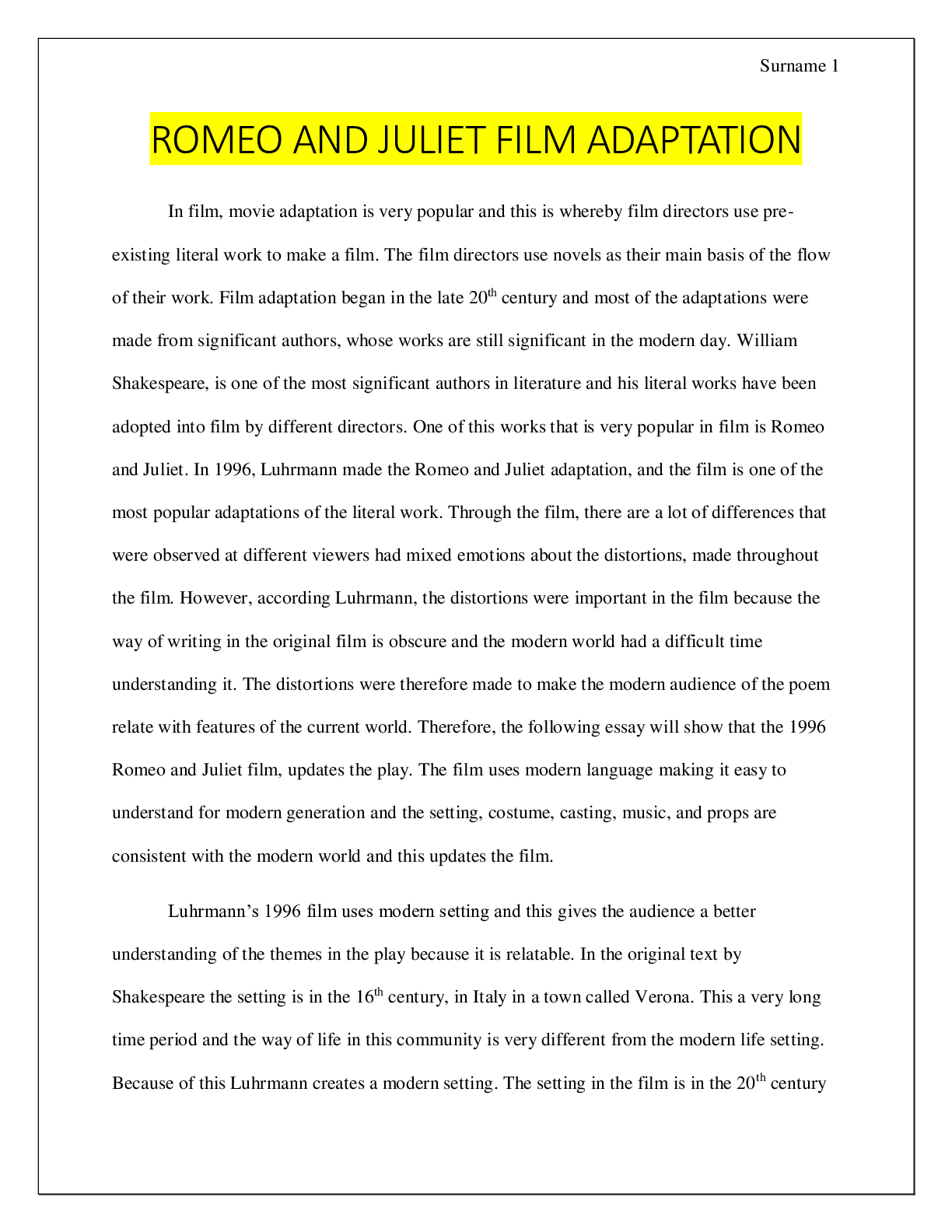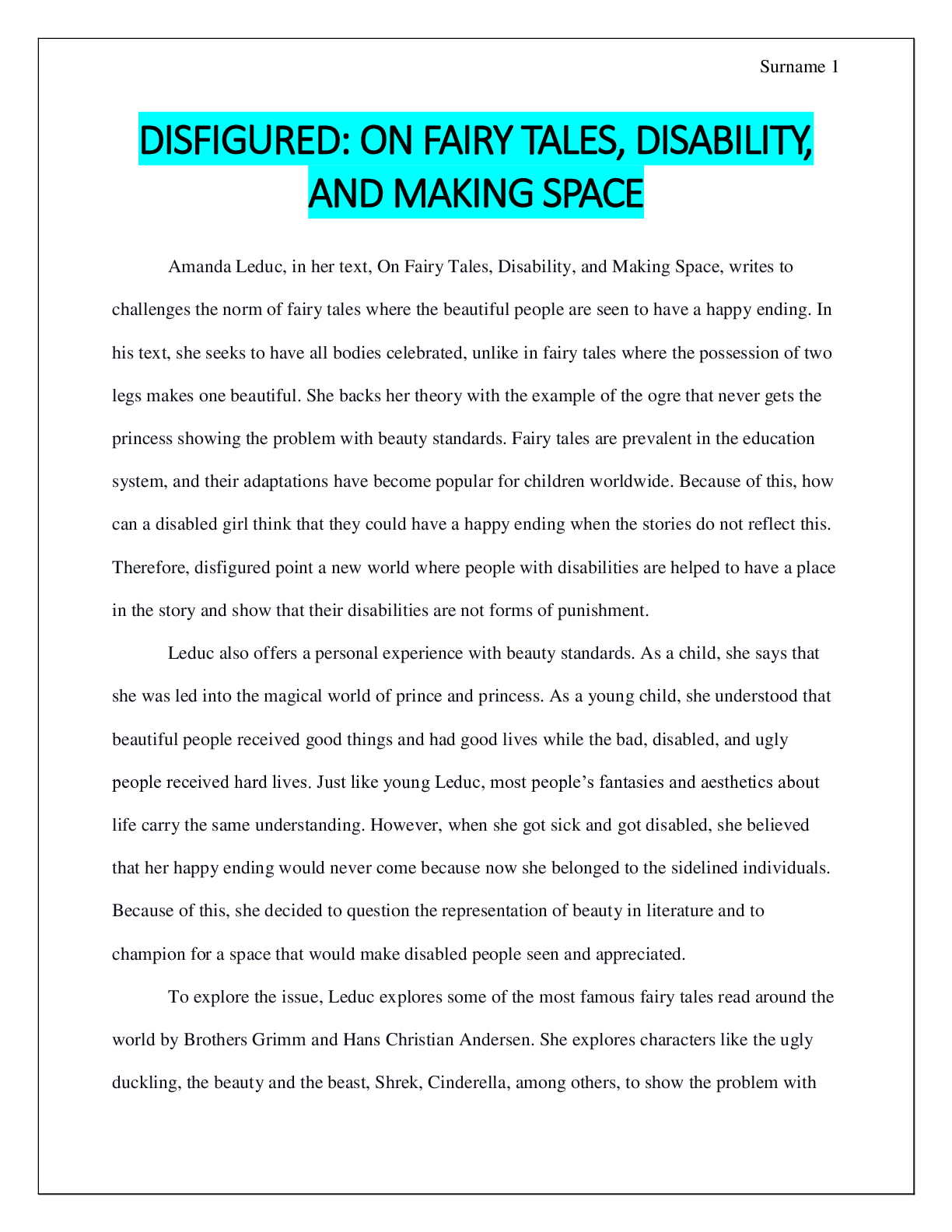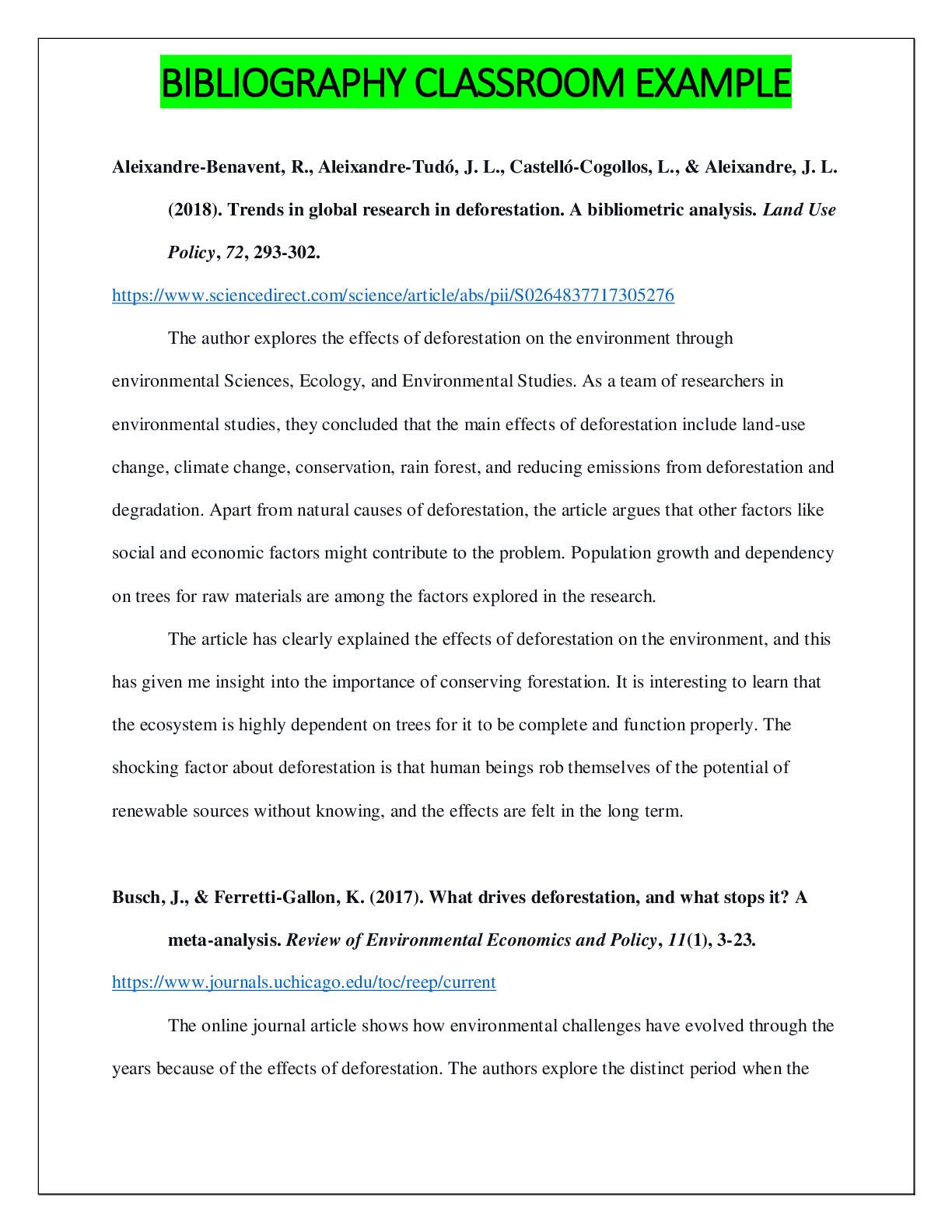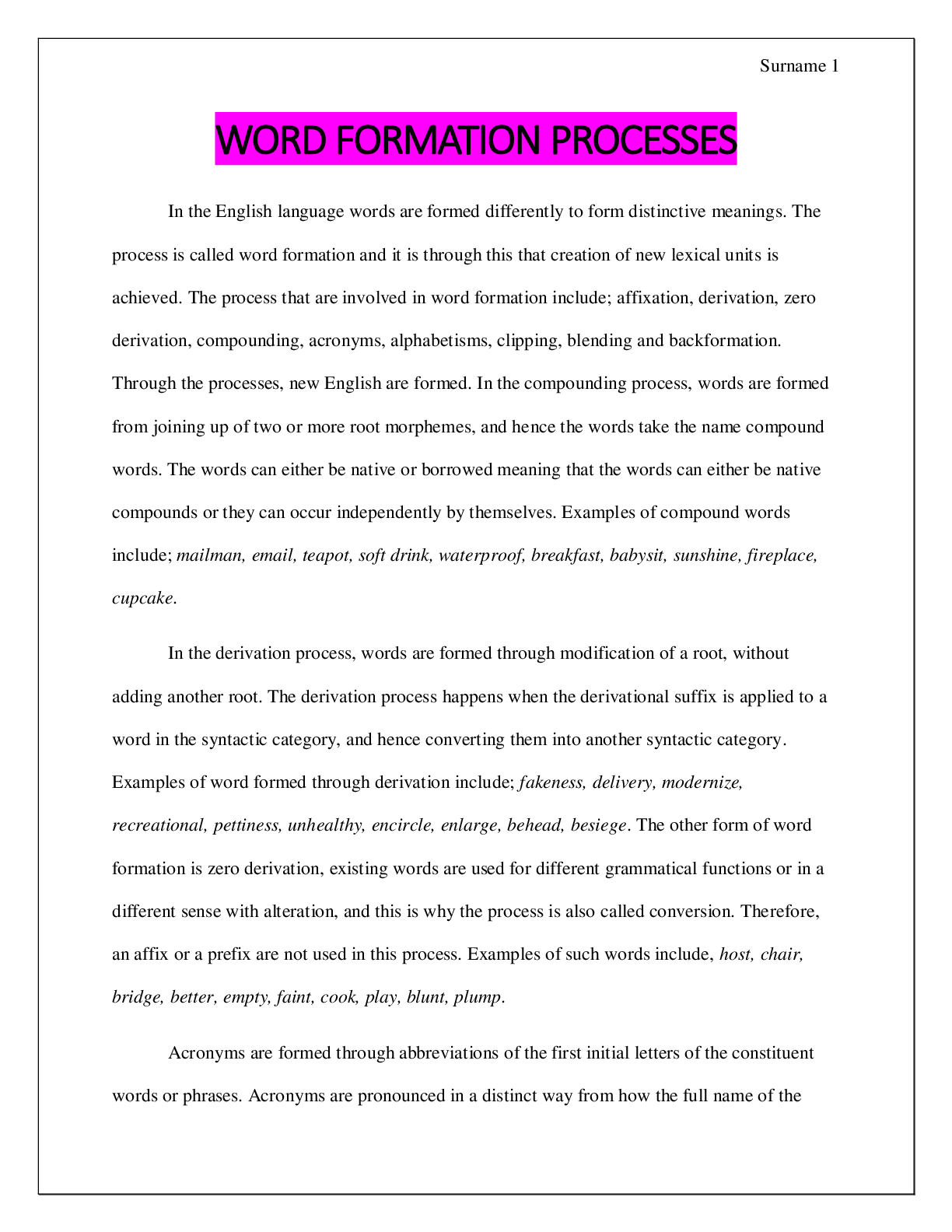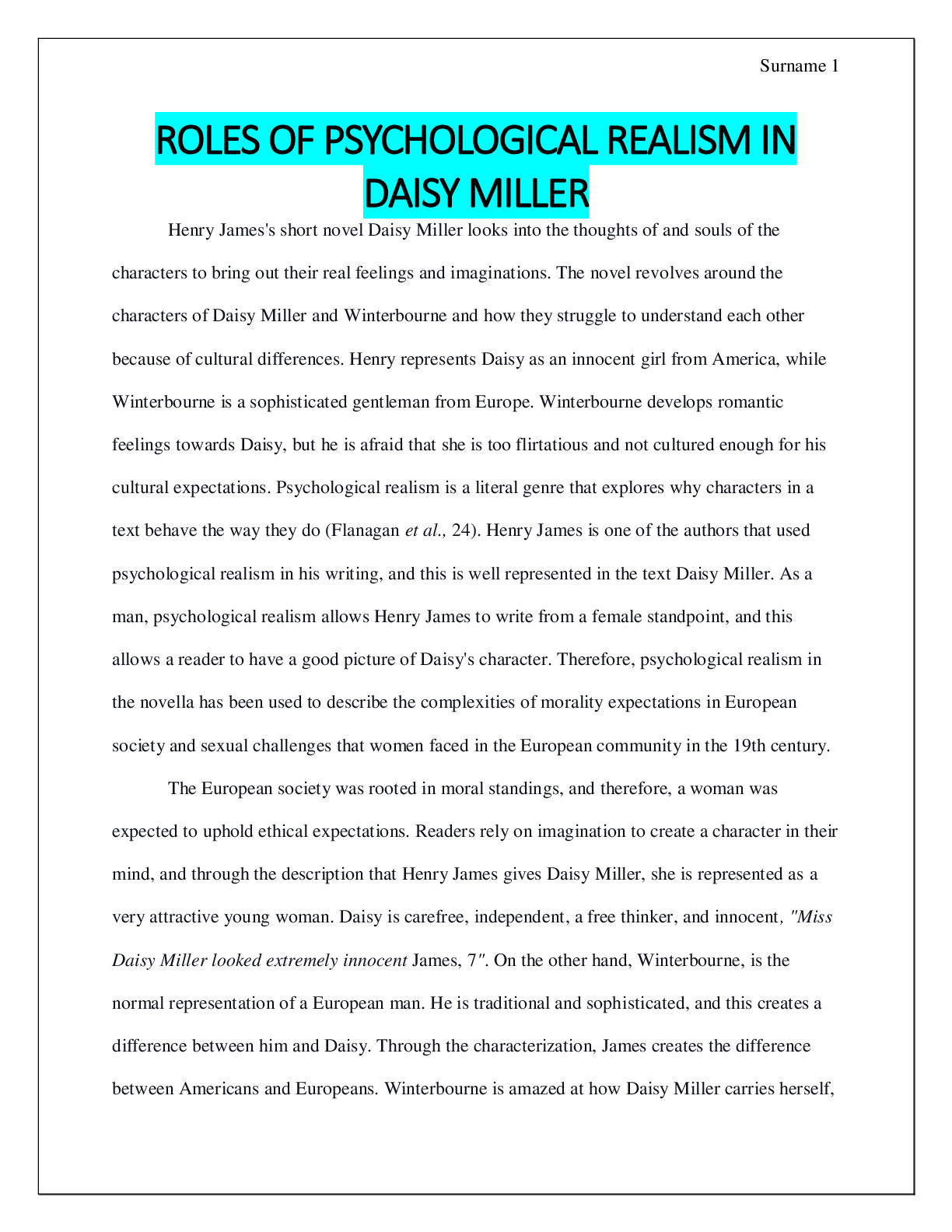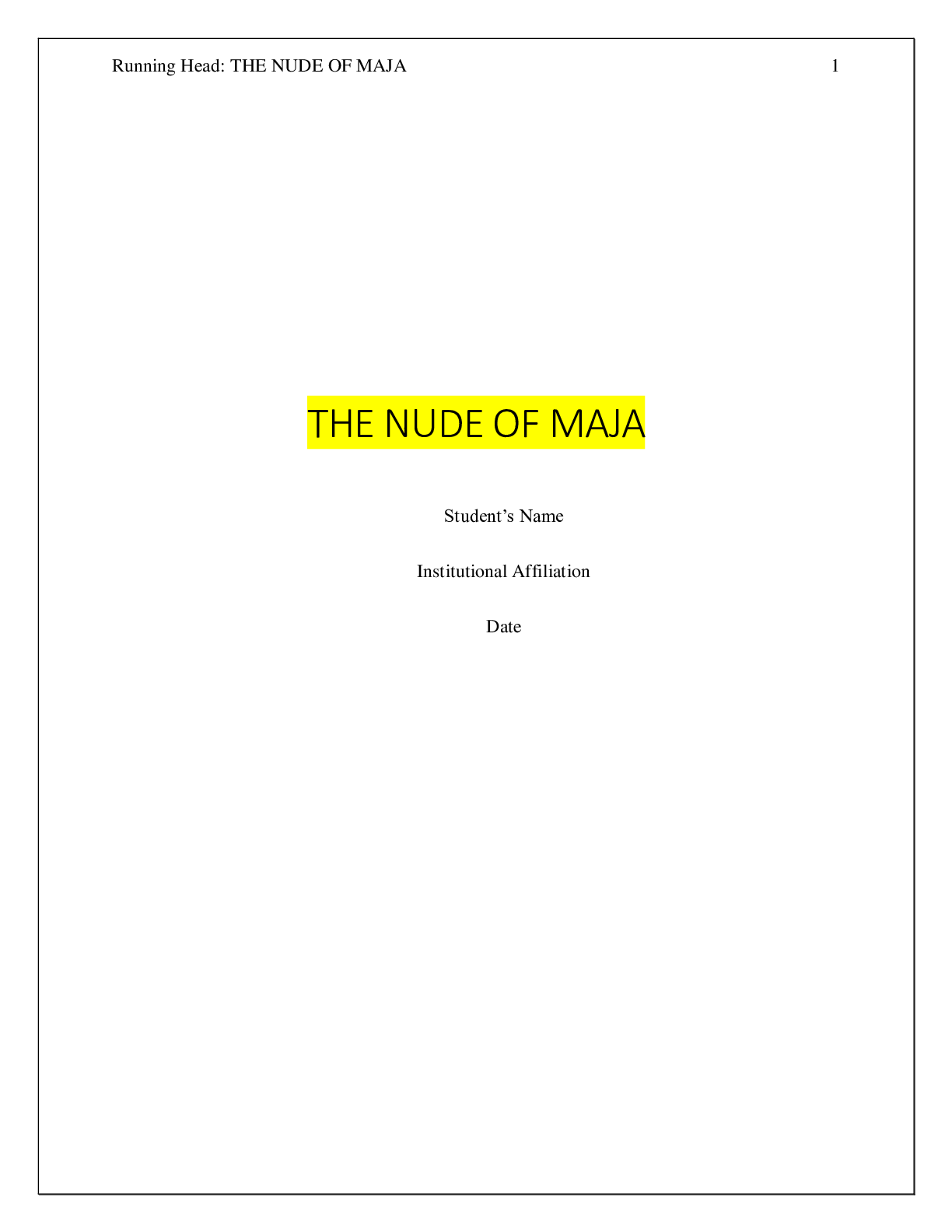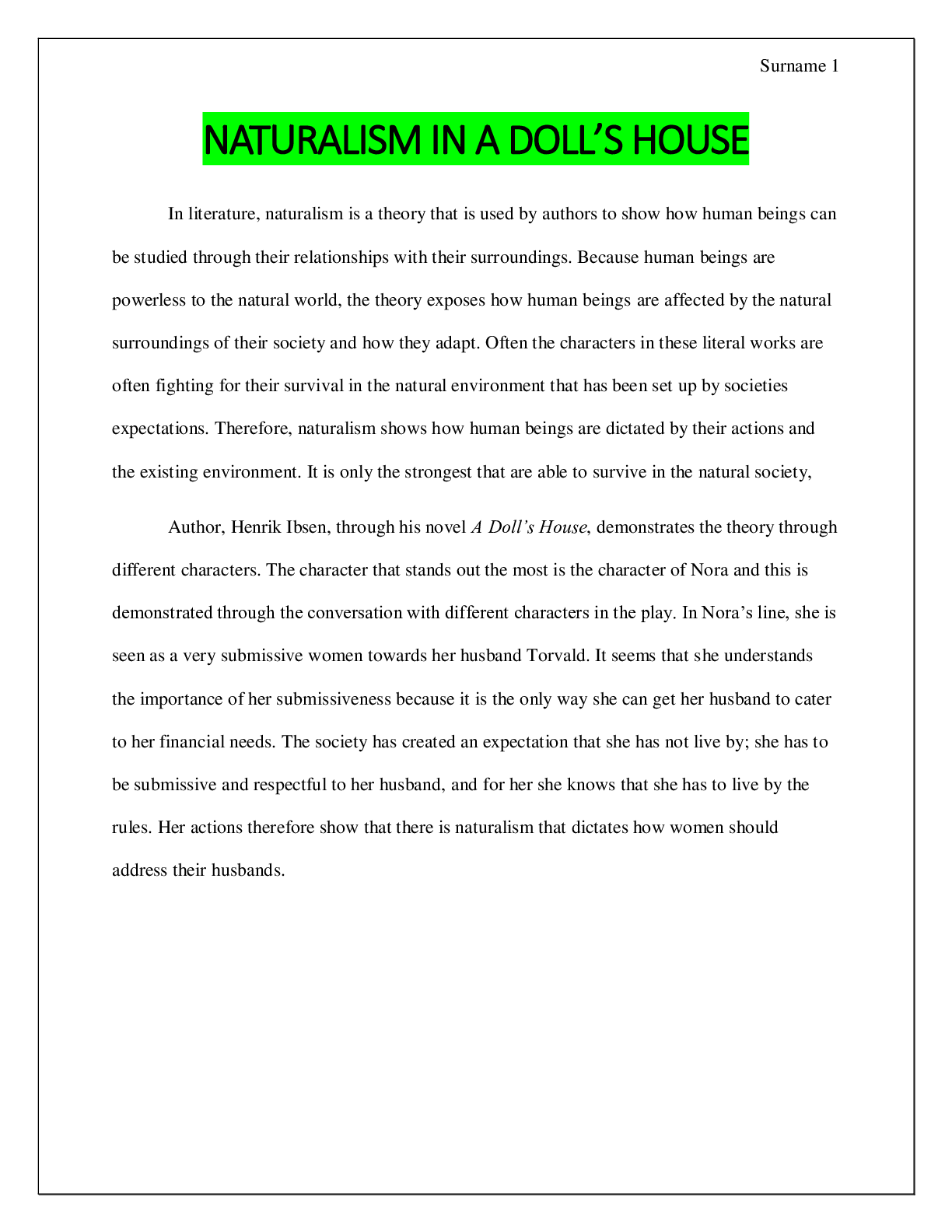Linguistics > ESSAY > LINGUISTICS: ROLES OF L1 TO L2 TRANSFER ( DOWNLOAD TO GET A) (All)
LINGUISTICS: ROLES OF L1 TO L2 TRANSFER ( DOWNLOAD TO GET A)
Document Content and Description Below
Roles of L1 to L2 transfer Language transfer is an important factor in second language acquisition, and this is because learning of a language is a habit-forming process. The transfer from a native l... anguage, the L1, influence the learning of L2 because there is interference. Therefore, for many people lack of success in L2 acquisition is attributed to the native language of a learner. There are distinctive roles of L1 to L2 transfer, and the major forms of transfers are positive and negative transfers. These transfers are facilitated by the cognitive approach of an individual in learning a second language. Positive transfer is the process where the native language, L1 facilitates acquisition on the second language. in this transfer, L1 and L2 mostly share certain types of principles and this makes it easy for a learner to learn the second language. Most of the time, L2 learners normally express the proficiency they have gained through the native language and the new language, meaning that the skills and knowledge they developed in L1 are also transferred to L2. For example, cognates are common of transfer. Cognates are words of the same origin that are used in different but related languages, and they are used for the same meaning. For example, the word haus in German and House in English have a very close pronunciation and meaning and L1 to L2 transfer in this case would be easy because of previous knowledge. Therefore through, positive transfer, there is an underlying proficiency in L1 proficiency and cognitive that restructuring that allows skills to transfer. Negative transfer on the other hand is the processes whereby L1 knowledge interferes with L2 acquisition. The most affected group by negative transfer are the Chinese. They have a difficult time in understanding tones, because they have different tones in Chinese and this contributes to negative transfer. In learning of syntax and phonology, negative transfer is experienced among many learners, and this is why Chinese take long in mastering the English language. Through negative transfer, learners of L2 often transfer their L1 discourse patterns or conventions to L2 writing. Negative transfer of L1 to L2 is therefore influenced by Contrastive Analysis (CA) and Contrastive Rhetoric (CR). CA argues that the negative language of a speaker has more negative effect on learning a second language, in comparison of positive transfer. CA argues that the base of learning a language is affected by behavioral or structural theory. When learning a new language, the transfer to the new target language is often negative and the difficulties in interference are caused by linguistic differences in the two languages. Without a close similarity degree to L2 from L1, difficulties in the language are experienced and this is the case in Chinese trying to learn English language. CA therefore argues that difficulties in transfer arise from differences and distance between native language and target language. Other factors that affect L1 to L2 is language distance, because, learners that are close related to L2 have an easier time mastering the language. Also, age play an important role in transfer, because if L1 is firmly established in a person, they have a hard time learning L2, and this means that at a younger age, L2 acquisition is easier. This is attributed to the fact that at a young age, one has not fully developed their native language and this makes it easy for a learner to master L2. It is also notable that in the transfer of L1 to L2, learners are required to learn the grammatical morphemes and functional words that help them form meaningful sentences. Universally for one to become fluent in a L2, they have to follow the natural order acquisition of verbs, articles and auxiliary, irregular past and regular past. When a learner of the target language does not follow this order, they can be able to communicate but not fluently. For example, Native speakers of Chinese find it hard to adopt the natural order acquisition of linguistics. Persistent transfer effects are experienced in this transfer and they are very difficult to get rid of. For example, in Japanese to English transfer, objects are often dropped but not the subject. Therefore, the transfer of L1 to L2 is affected by negative and positive transfers. Positive transfer helps a learner in L2 acquisition because they already possess the skill but negative transfer affect L2 acquisition because they are the main barriers of L1 to L2 transfer. Teachers of language should therefore take advantage of positive transfer as it helps in easier acquisition on the second language. They should also help learners notice negative transfers that affect mastering of L2 as this helps learners understand linguistic orders in the new language and this facilitates perfection of L2. Persistent transfer errors should not be paid a lot of attention because when learning a new language, it can be very hard to avoid mistakes. [Show More]
Last updated: 1 year ago
Preview 1 out of 3 pages
Instant download

Buy this document to get the full access instantly
Instant Download Access after purchase
Add to cartInstant download
Reviews( 0 )
Document information
Connected school, study & course
About the document
Uploaded On
Sep 06, 2021
Number of pages
3
Written in
Additional information
This document has been written for:
Uploaded
Sep 06, 2021
Downloads
0
Views
52


